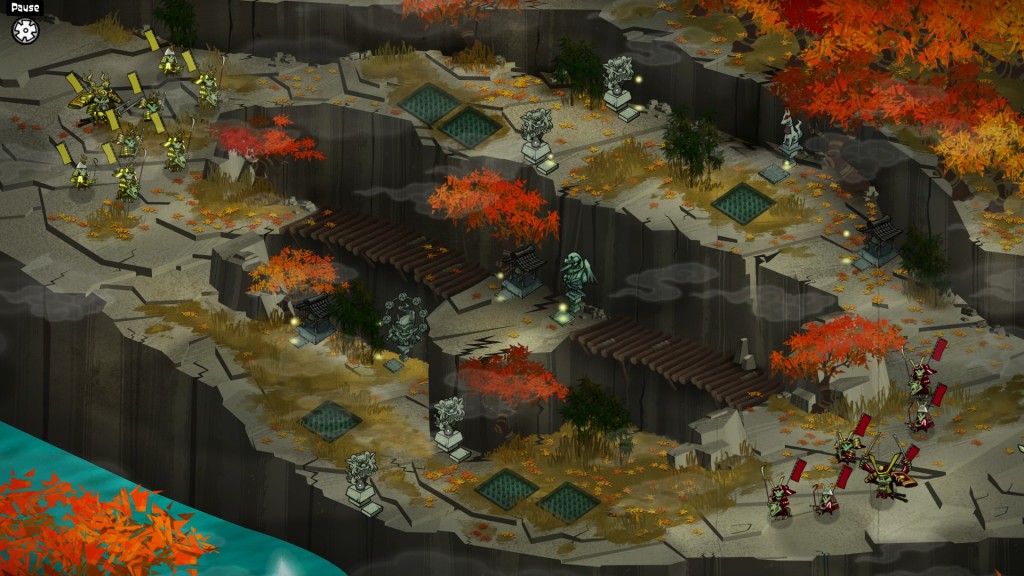“Perfection is achieved not when there is nothing more to add, but when there is nothing more to take away.” Take that logic, apply to a strategy game, blend in a striking aesthetic, and sprinkle with humour: developer 17-BIT’s Skulls of the Shogun is the result.
Skulls’ basic pattern is familiar: it’s a turn-based tactics game about capturing bases, recruiting new troops, and outmanoeuvring the enemy. This makes it a cousin to Advance Wars, The Perfect General, and UniWar; but within this field, Skulls distinguishes itself via its personality and polish.
The first thing you’ll notice about Skulls is its unique premise. Most of its peers have generic military or science fiction settings. Not Skulls, which takes the player on a goofy, seasonally-themed romp through a (loosely!) Japanese-inspired land of the dead – the screenshot above illustrates Skulls’ gorgeous autumn. You don’t capture cities; you haunt rice paddies. You don’t produce artillery in factories; you summon fireball-lobbing monks at shrines. Your soldiers don’t become more powerful by gaining experience points; they become more powerful by eating the skulls of defeated enemies.
That last example illustrates so many things the game does well. Skull-eating is introduced via a hilarious sequence, and that sense of humour fills the campaign – I can’t imagine missing out by playing skirmish mode. Next, skulls offer an easy way to tell veteran units from rookies – veterans are surrounded by the floating skulls they’ve eaten! And last, since each defeated enemy only drops one skull, who gets it? Do you feed the skull to your fragile-but-powerful archer, so he can become less fragile (and eventually unlock his double attack)? Do you feed it to a slow, sturdy infantryman, so he can better hold your front line? Do you feed it to a monk, to expand his spell repertoire?
As this indicates, Skulls is a game built around clearly presented, deceptively simple choices. There are fewer than ten unit types, but each is distinct and useful, so which do you recruit? No matter how large a player’s army, only five units can be activated each turn, so which five? Each map can be played in 30-60 minutes (and can’t stalemate, as there are finite resources per map), and the entire campaign only lasts around 10 hours, but that time is packed with interesting decisions.
Therein lies the beauty of Skulls: vivid proof that size does not equal quality; and that it’s possible to craft very good games that can be finished in a reasonable time. A $15 price tag is the icing on the cake. Short, sweet, finely honed, and funny, Skulls of the Shogun is a game from which the genre could learn a lot. Highly recommended to strategy game fans.
The basis of my review: I spent 12 hours in the game per Steam. I have finished the main campaign; however, I have not played skirmish mode or the bonus campaign added for the Steam release.


3 thoughts on “Skulls of the Shogun: The Verdict”